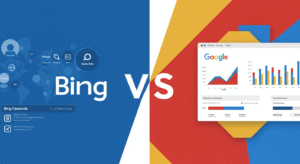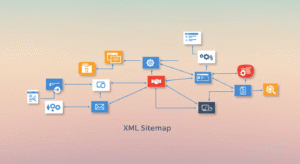Meta Titles and Meta Descriptions
When it comes to search engine optimization (SEO), one of the most overlooked yet essential practices is writing optimized meta titles and descriptions. These are the first touchpoints between your webpage and potential visitors on search engine results pages (SERPs). A well-written meta title and description can dramatically increase your click-through rates (CTR) and help search engines understand the Purpose of your content.
The meta title, often referred to as the SEO title, is the clickable headline that appears in search engine results and also shows up in the browser tab. It should be clear, relevant, and include the primary keyword close to the beginning. A well crafted title helps search engines understand the topic of your page and also influences users to click through. Keeping the title under 60 characters ensures it displays properly without getting cut off.
The meta description, on the other hand, is a short snippet that appears beneath the title in search results. It summarizes the content of the page and serves as a pitch to potential visitors.
The Role of Meta Titles and Descriptions
Meta titles and meta descriptions are snippets of text that appear on SERPs to represent your webpage content. These are embedded in your site’s HTML using specific HTML elements, typically <title> for the title and <meta name=”description”> for the description.
- The title tag informs search engines and users about the topic of the page.
- The meta description provides a summary that persuades users to click through.
These two components act as your content’s digital billboard, giving users a reason to engage with your page over the competition.
Importance of Meta Titles and Descriptions in SEO
These elements serve two vital purposes:
- Search Engine Understanding: They help search engines comprehend your page’s context and relevance.
- User Engagement: A well-crafted meta snippet improves click-through rates, making users more likely to choose your link over others.
The short text that appears below the title in search results is just as important. It gives people a reason to click by summarizing what they’ll find on the page. If it’s engaging, informative, and matches their search intent, they’re more likely to choose your site over others. This not only brings more visitors to your website but also signals to search engines that your content is helpful, which can improve your rankings over time. With the emergence of Elite SEO tools, marketers can analyze how meta content impacts search engine optimization (SEO) performance using length assessment, SERP previews, and performance metrics.
Purpose and Best Practices
- Summarize content effectively
Write a brief, clear summary that reflects what the page is about. This helps users understand the value of your content at a glance and improves relevance. - Include search terms your audience is using
Use keywords that match what your audience types into search engines. This increases the chances of your page appearing in relevant search results. - Drive user action with compelling language
Use persuasive and action-oriented words to spark interest. Phrases like “discover now” or “learn more” encourage users to click through to your site. - Boost visibility on SERPs Well-optimized titles and descriptions make your listing stand out on search engine results pages. This can lead to higher click-through rates and better overall SEO performance.
How Long Should Your Meta Title and Description Be?
Your meta title and meta description should be carefully optimized for both search engines and user experience, with specific length guidelines to ensure they display properly in search results.
The ideal length for a meta title is 50 to 60 characters. If it goes beyond 60 characters, search engines like Google may cut it off, replacing the rest with ellipses (…), which can reduce clarity and impact. Keeping the title concise, keyword-rich, and relevant helps search engines understand your content and increases the likelihood of users clicking on your result. For the meta description, the recommended length is between 150 and 160 characters. Descriptions longer than this limit risk being truncated, which may leave out important information or calls to action. A well-written meta description should summarize the page content, include a primary keyword naturally, and encourage users to visit your site by offering value or solving a need.
Use Elite SEO tools like Yoast, RankMath, or Ahrefs to do a length assessment and preview what your snippet will look like in real-time.
How to Write a Great SEO Meta Title
Structure and Style
Follow this structure to make your meta title SEO-friendly:
- Place keywords first: Start with the search term or phrase you’re targeting.
- Add branding at the end: Optional but useful for recognition.
- Keep it natural: Avoid keyword stuffing.
Example:
Best Coffee Shops in Brooklyn | JavaJoy Café Guide
This format uses a relevant search term, maintains readability, and includes branding.
How to Write a Compelling Meta Description
Here’s how to make your meta description contain the right balance of information and persuasion:
- Summarize value clearly.
- Use action words (discover, explore, learn, get).
- Include the primary search term.
- Avoid duplication across pages.
- Appeal to emotion or curiosity.
Example:
Explore the best Brooklyn coffee shops with our local guide. Discover hidden gems, top-rated brews, and cozy corners.
This encourages action while being rich in search engine optimization (SEO) signals.
Writing Meta Titles and Descriptions in CMS Platforms
Here’s how to manage titles and descriptions:
- Install an SEO plugin like Yoast or RankMath.
- Edit the page or post.
- Scroll down to the SEO section.
- Fill in the title and meta description fields.
- Use the plugin’s HTML preview for adjustments.
The plugin helps ensure your HTML elements meet length, keyword, and structure guidelines.
Title and Meta Description in CMS
In a CMS (Content Management System), the Title Tag and Meta Description are critical SEO elements that help search engines and users understand the content of a webpage. Here’s how they typically work:
Title Tag
- Appears as the clickable headline in search engine results.
- Should include your main keyword and be no longer than 50–60 characters.
- Example: Best Hiking Trails in Northern Melbourne | Adventure Guide
Most CMS platforms (like WordPress, Wix, Shopify) let you edit the title tag through SEO settings in the page or post editor, or via an SEO plugin like Yoast or Rank Math.
Meta Description
- A brief summary (about 150–160 characters) that appears below your title in search results.
- Doesn’t directly affect rankings, but strongly influences click-through rates.
- Example: Explore the top scenic hiking trails in Australia with our ultimate guide. Tips, maps, and gear lists included.
Many CMS platforms provide a dedicated field for this as well, if not, an SEO plugin will offer it.
How AI Can Help
Tools like ChatGPT or Jasper can help generate first-draft title tags and meta descriptions based on your content. Human editing is essential.
Use AI to generate, then:
- Refine with human language and tone.
- Align with search engine optimization (SEO) intent.
- Avoid robotic or duplicated phrasing.
The key is blending efficiency with EEAT principles (Expertise, Experience, Authoritativeness, Trustworthiness).
Common Mistakes to Avoid
- Writing too long or too short (check characters).
- Ignoring primary search terms.
- Using the same meta description for every page.
- Overusing AI-generated content without edits.
- Stuffing too many keywords.
- Not reviewing how your snippets appear on mobile.
Tools to Help You Get It Right
| Tool Name | Function |
| Yoast SEO | Plugin for WordPress to optimize SEO |
| RankMath | Advanced SEO plugin for WordPress |
| Ahrefs | SERP preview, keyword tracking |
| SEOptimer | Meta tag analysis |
| Meta Tag Checker | Validates HTML elements |
| Jasper AI | AI writing assistant |
These Elite SEO tools help you stay within length guidelines, improve keyword usage, and visualize your webpage’s SERP preview.
Conclusion
Creating effective meta titles and descriptions is more than just a technical SEO task; it’s a powerful way to influence user behavior and gain favor with search engines. By understanding their purpose, keeping within the right length, and using the right HTML elements, you give your webpage the best chance to rank and perform.
Whether you’re editing via title and meta description in WordPress, using a CMS, or relying on an SEO plugin, always keep the user’s experience and intent in mind. Use AI to generate ideas, but never forget the human element.




